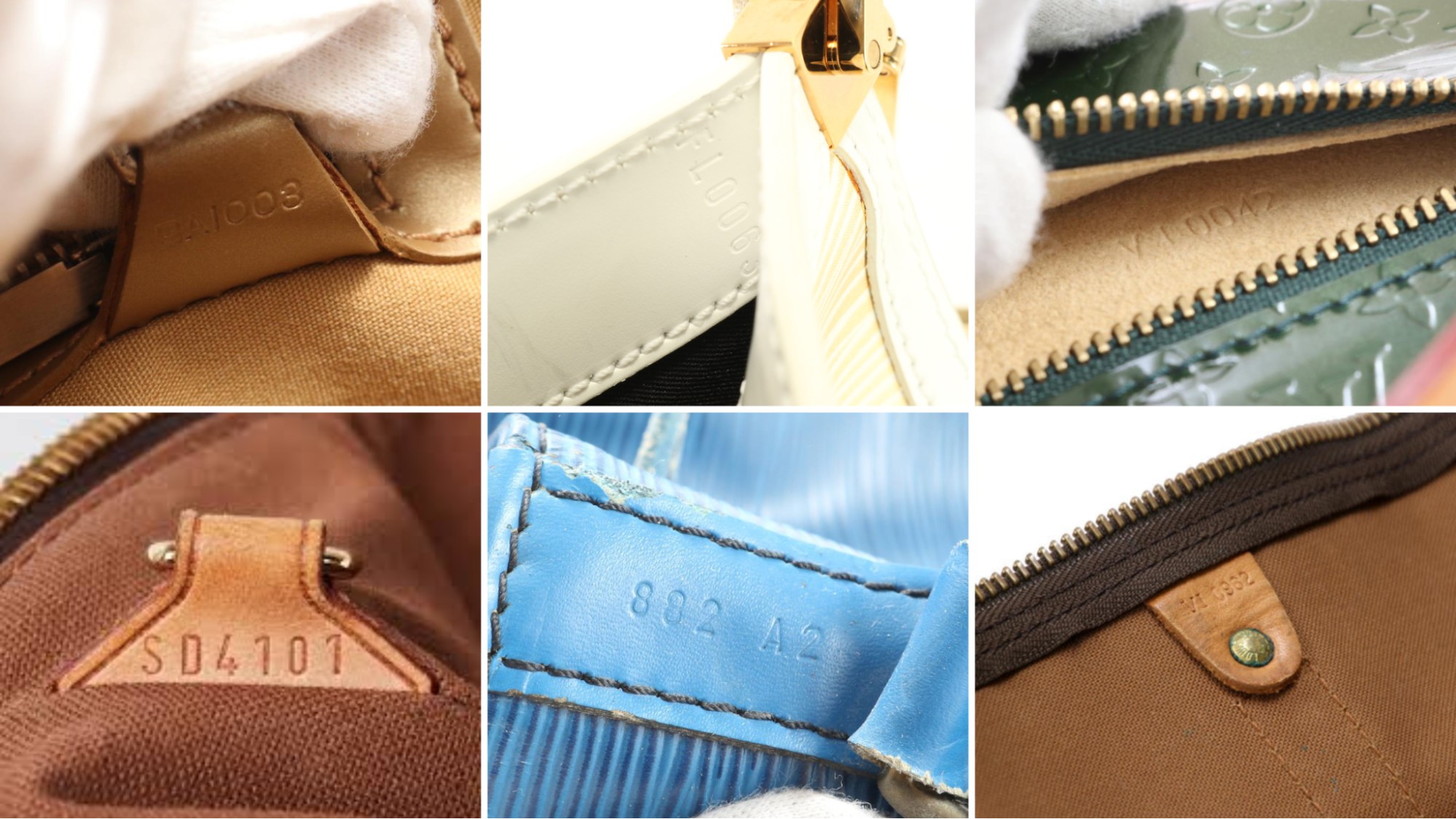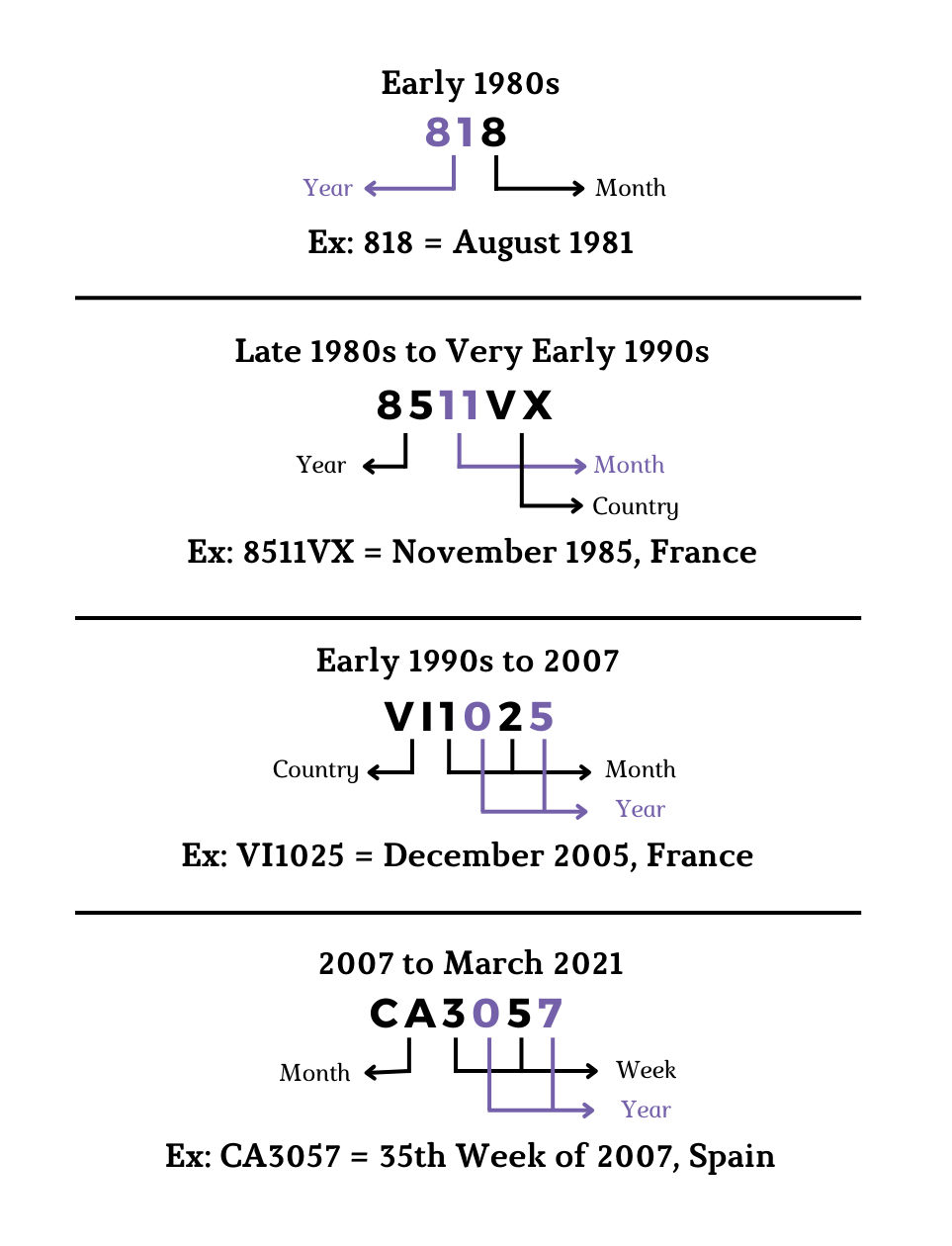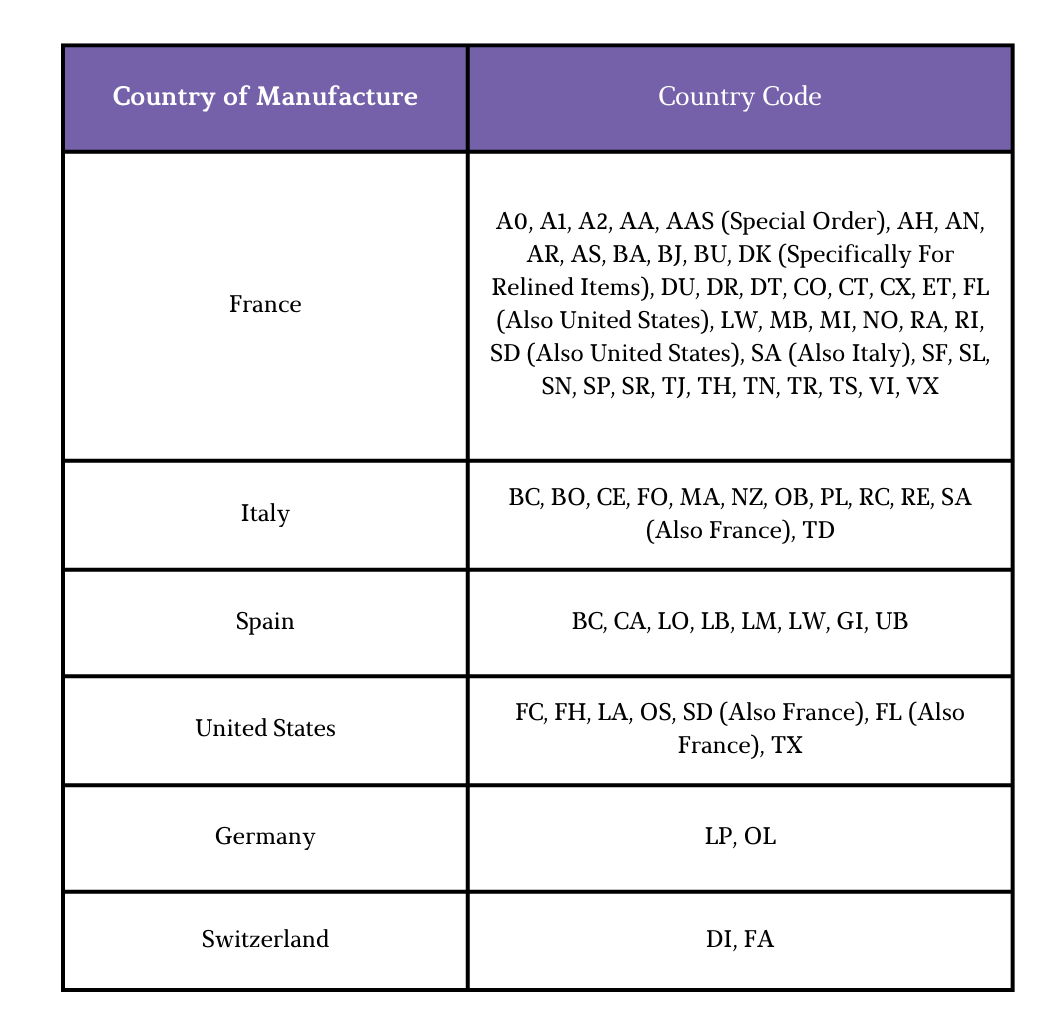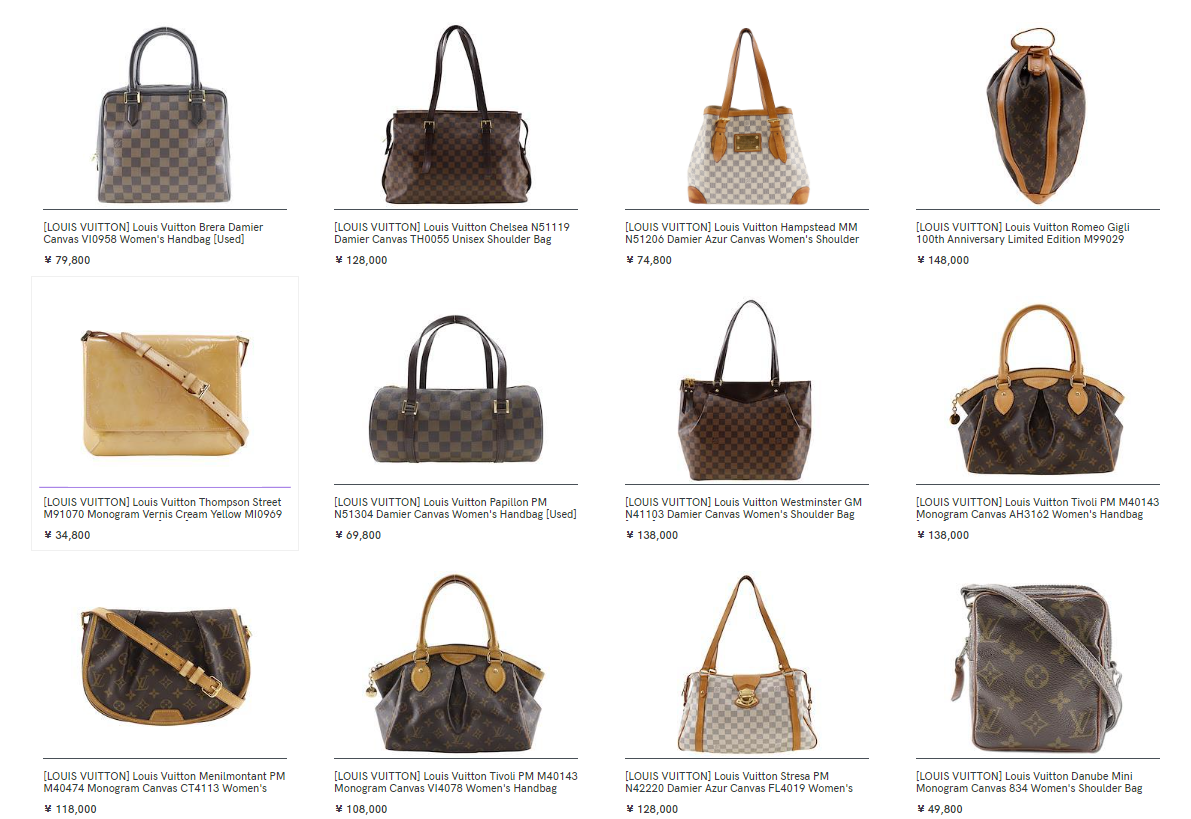
Most luxury brands have a system to keep track of the origin of their products, and having a unique identifying code attached to each item is the most common one. When cross-referenced with the brand records, authenticators can use those codes as part of the process to identify counterfeit items and verify the manufacturing country and date, type of item, and other conditions depending on the label.
From the early 1980s to the start of 2021, almost all Louis Vuitton bags and wallets have a code. Getting a pre-loved bag is like adding a piece of history to your wardrobe and checking the code that says where and when the item was made is usually the first thing people do. Not rarely, there are cases where someone would only buy an item because that specific date code has something meaningful behind it.

Deciphering the code on your Louis Vuitton items may seem confusing at the beginning, but with the tips you’ll be reading here today, you'll feel confident every time you check it.
Below, you can check the key guidelines for items with a stamped code inside. After March 2021, Louis Vuitton stopped stamping their bags and introduced a microchip system instead. For modern items, I suggest downloading an NFC reader on your mobile device to scan the code.
The basic rules of Louis Vuitton code system

Here are some of the guidelines I have in mind when reading the codes:
- Before 1980: No actual date code was included in most Louis Vuitton bags, only on their steamer trunks.
- Three Numbers (Early 1980s): Items marked with only three numbers are dated back to the early 1980s.
- Country Code at the End (Late 1980s to Very Early 1990s): Codes ending with a country code always indicate production in the late 1980s to very early 1990s.
- Codes from the Early 1990s to March 2021: If the combined first and third numbers exceed 12, it indicates a product made after 2007. If those same numbers are 12 or below, look at the remaining numbers to figure out the year and then you can differentiate if it’s an older model or not.
Examples:VI1019 corresponds to the 11th week of 2009 (11th week = after 2007)VI1011 signifies November 2001 (November = before 2007).
- Reading Country Codes: For some country codes you can follow a specific pattern, but unfortunately for most of them you can't. Codes starting with A and V always indicate items made in France, while DK indicates relined items (refurbished pieces). In my experience, it's not easy to remember them since the same code can refer to different places, and I advise you to check the country code sheet to be 100% sure.

If you find it helpful to have these codes wherever you go, feel free to save the images above—they are perfectly sized for mobile devices. This way, you can easily refer to them anytime, anywhere, without needing to ask Google.
I Can’t Find the Code Inside My Bag
If your bag doesn’t have the code, there might be reasons behind it. Let’s take a look at the most common conditions if the date code is nowhere to be found. Don’t worry, those situations are not as rare as you think.
- Rubbed Off Stamp
Over time there are chances the code inside your bag has simply disappeared due to usage and aging. For example, the Louis Vuitton suede-like Alcantara material, commonly used for the lining, is not the best in holding heat stamps over the years and the code might not be readable.
- Early Vintage or Super New Items
Starting in March of 2021, Louis Vuitton replaced their stamps with an RFID microchip you can read with your smartphone device. The bags before 1980 also don’t have code, for those you can’t point to the exact date and if you’re not sure about its authenticity, asking a professional authenticator is the best option.
- Replaced Lining
For some bags, the code might be hidden somewhere outside, but the interior lining is where almost all of them are located. When the bag is repaired by Louis Vuitton, the item will come back with a new code, but when it’s done by a third-party company, the code will not be there anymore.
- Code on External Add-ons
Sometimes the code is attached to the item’s add-ons, such as small pouches. The opposite can also happen, the main bag having the code but not its detachable inserts, for example, in the Pochette Felice the purse has a code but its inserts don't.
If you’re not sure where to look to find the code inside an item, here’s a very useful video by Handbagholic you can watch to guide you through.
Extra Tips:
- Authenticating a Louis Vuitton bag demands more than just reading the code. Always purchase from trustworthy sellers or get your bag authenticated by a professional.
- Unlike Chanel, Louis Vuitton does not have an authenticity card added to their bags.
- A refurbished item does not make it non-authentic, but Louis Vuitton won’t accept it for in-house repairs.
Want to Receive Content Like This Directly in Your Inbox?

This article was originally part of the ZenPlus Luxe Weekly Newsletter, where members of our community receive special discounts, fashion news, maintenance tips, and more. You can join it for free by subscribing here.
Looking for Authentic Louis Vuitton bags?

Louis Vuitton is one of the most popular brands in Japan, finding items in pristine condition on the second market is very common in the country. Plus, the current weakening of the Japanese yen has beaten the prices found everywhere else.
The good news is, that you don’t have to worry about flying to Japan to get a new bag, ZenPlus is here to help you with that. ZenPlus is a marketplace that connects sellers all over Japan to customers all over the world.
About the Writer
Amanda Ayabe is a fashion graduate based in Osaka, passionate about the luxury industry and hand crafted goods. She worked for 3 years as a live seller and buyer, sharing her knowledge and passion for designer bags to customers in various locations around the globe. Loves specialty coffee, long talks, traveling and photography.





